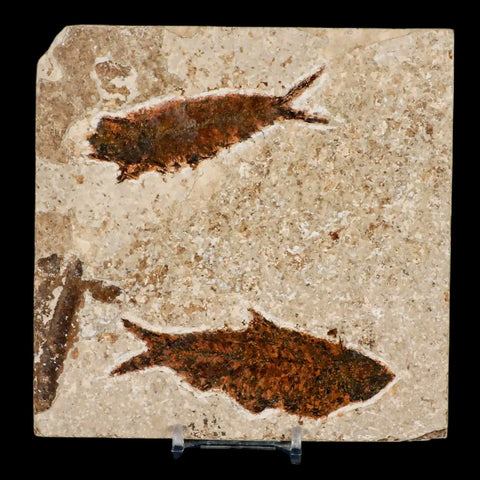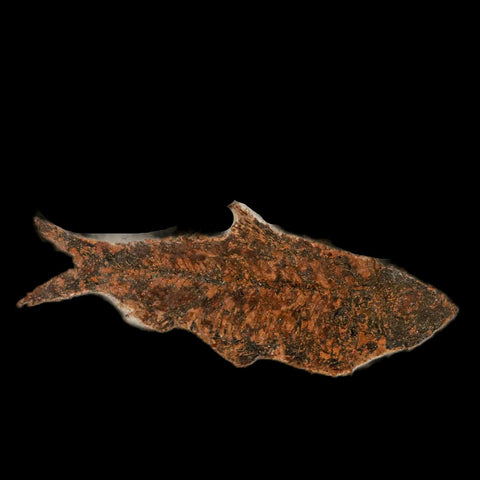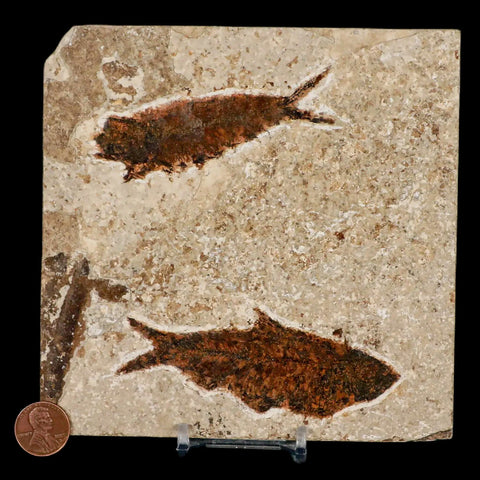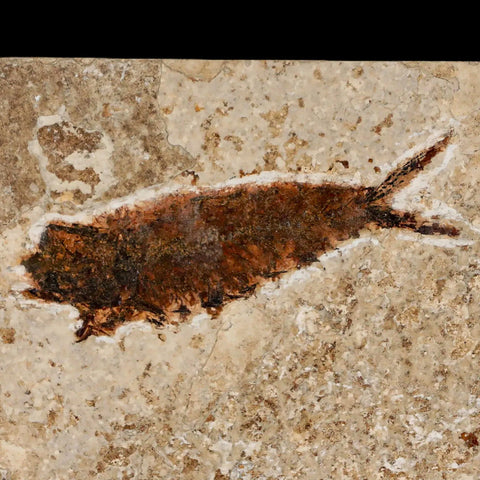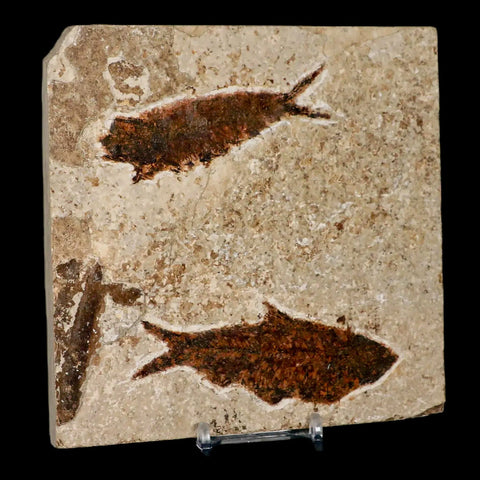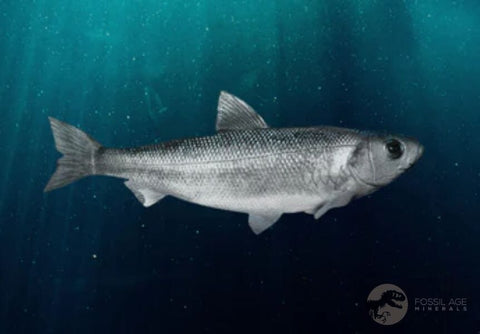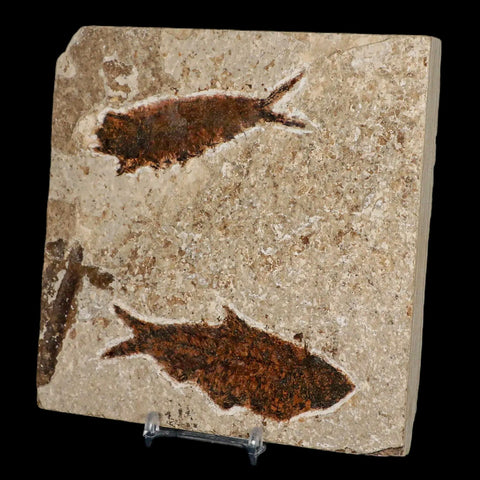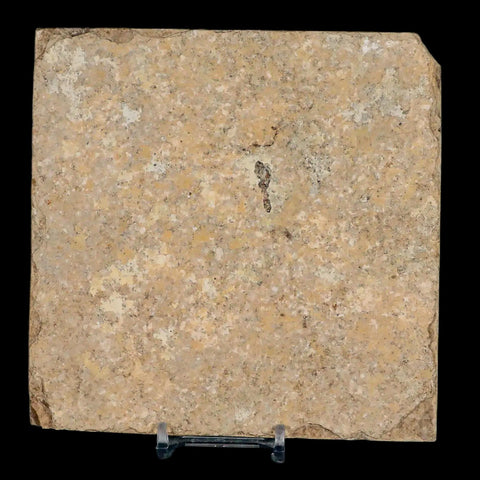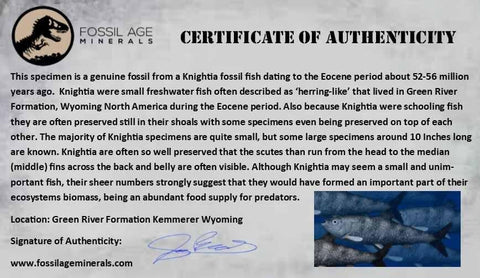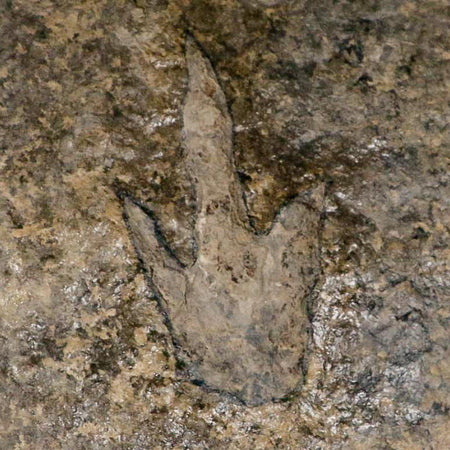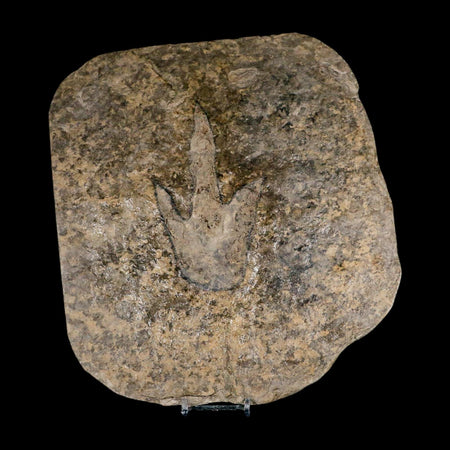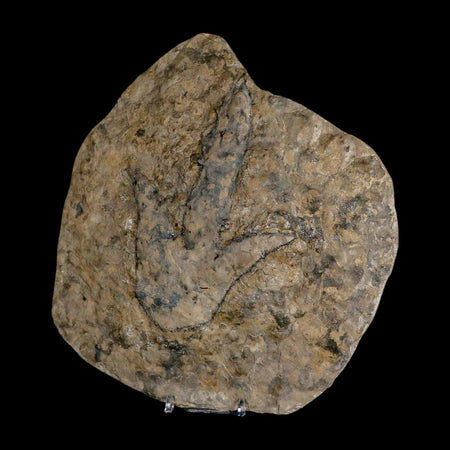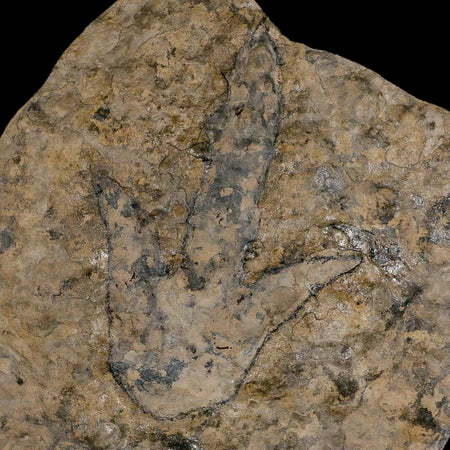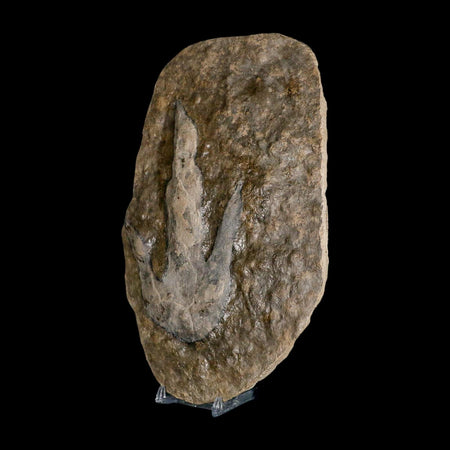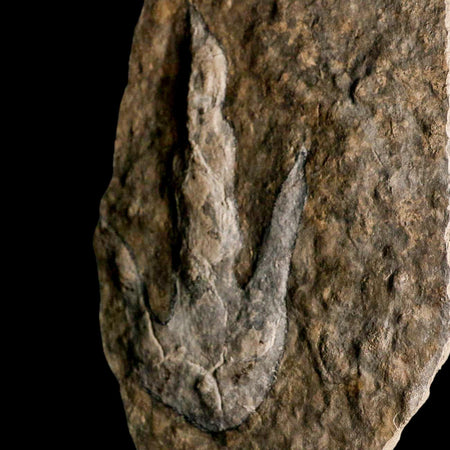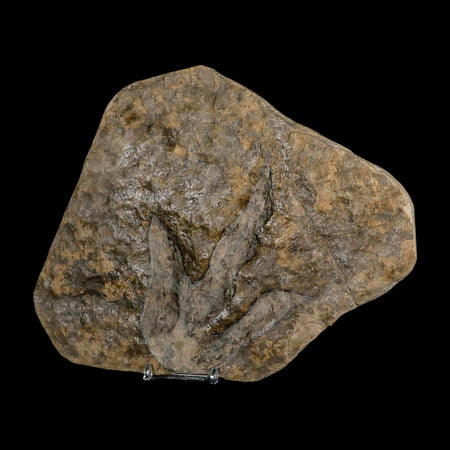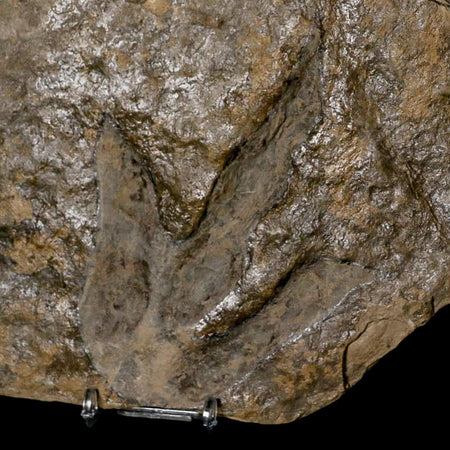Two 2 Knightia Eocaena Fossil Fish Green River FM WY Eocene Age COA & Stand
Location: Kemmerer, Wyoming
Weight: 1 Pound 4.7 Ounces
Dimensions: 5.5 Inches Long, 5.5 Inches Wide, 0.6 Inches Thick (Plate)
The Fish One is: 3.7 Inches Long, 1 Inch Wide
The Fish Two is: 3.1 Inches Long, 1.4 Inches Wide
Comes with a Certificate of Authenticity.
Comes with a Free Stand.
The item pictured is the one you will receive.
This is a genuine fossil.
50 million years old, Eocene age
Knightia Eocaena is the most common fish in Fossil Lake and may be the most commonly articulated vertebrate fossil in the world. It is Wyoming's State Fossil. Length: up to 25 cm (10 in).
Fifty million years ago, ancient Fossil Lake existed in what is now southwest Wyoming. Of its estimated maximum extent of 930 square miles, approximately 500 square miles of sediment remains. The 230 square miles across the center of the ancient lake-bed contain exceptionally fossiliferous sediments and associated geologic features, including deltas, beaches, springs, and rocks from the center and nearshore environments.
The unique chemistry of Fossil Lake created perfect conditions for fossilization by preventing decay and scavenging. Over millions of years, millimeter-thick layers of limestone slowly accumulated, forming finely laminated deposits. These rocks contain the highest concentration of fossil fish in the world, along with other aquatic organisms and preserved geologic features. Thanks to this remarkable preservation, Fossil Lake stands as the most complete Paleogene record of a freshwater lake ecosystem anywhere on Earth.
Since the discovery in the 1870s, many perfectly preserved fossil fish have been recovered. Preserved with the fish in the laminated limestone is a complete aquatic ecosystem: cyanobacteria, plants, insects, crustaceans (shrimp, crawfish, and ostracods), amphibians (frog and primitive salamander), alligators, turtles, birds, and mammals, including the oldest pantolestid (otter-like animal). The subtropical terrestrial ecosystem surrounding the lake is also represented by rare fossils, including a horse, two snakes, lizards, two bat species, birds, an apatemyid (an arboreal insectivore), a miacod (a primitive carnivore), insects, and more than 325 types of leaves, seeds, and flowers.



